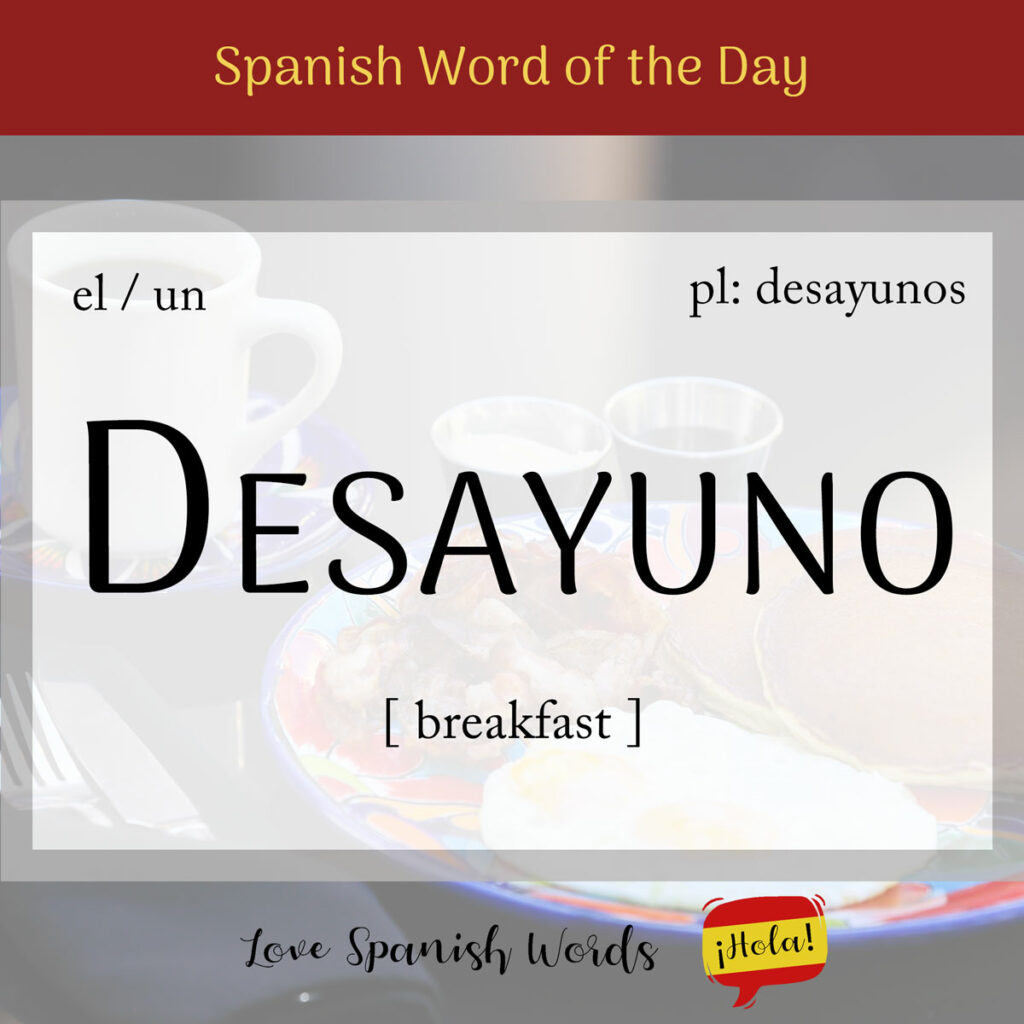Some say that the most important meal of the day is breakfast or desayuno. Each individual has their own distinct preference for how and when they consume it.
The word desayuno comes from the verb ayunar which means to fast and the prefix des, which means not, so it literally has the same meaning as the English to break one’s fast (breakfast). The word originally comes from the Vulgar Latin disieiunare with the same meaning.
Latin American pronunciation
European pronunciation

Desayuno is a masculine noun and takes the following definite and indefinite articles:
- el desayuno = the breakfast
- los desayunos = the breakfasts
- un desayuno = a breakfast
- unos desayunos = some breakfasts
El desayuno antes del trabajo es muy importante.
Breakfast before work is very important.


Did you know that…?
Desayuno is also the first-person singular present indicative of the verb desayunar = to have breakfast.
Let’s explore some derivatives using the word desayuno:
- desayuno a la inglesa = English breakfast
- desayuno continental = continental breakfast
- desayuno de trabajo = working breakfast
- desayuno americano = American style breakfast
- desayuno tardío = brunch
Mañana tomaré un desayuno a la inglesa.
Tomorrow I will have an English breakfast.
There are numerous regional and country-specific variations across Spanish-speaking countries regarding the names and timings of different meals throughout the day.
In most areas of Spain, el desayuno is the first thing a person eats in the day and for many this will be a quick, light bite when they wake up before starting work early.
Then another light meal will be taken mid-morning between 10:30 and 12pm and this is called el almuerzo (also labelled lunch by many but breakfast by others).
In the siesta-taking countries, the main meal of the day will then be eaten between the hours of 2pm and 4pm and will be called la comida (literally meaning food). This is usually the largest meal of the day.
Mid-afternoon at around 5:30pm a small merienda (snack) will be had and then the evening meal la cena will be later after all work is done from 8pm onwards.

It should be noted that the routine is different in Latin America, where breakfast can refer to any meal during the morning, lunch typically falls between 12 and 3pm, and dinner is in the evening.
A common saying in Colombia is Desde el desayuno se sabe que va a ser el almuerzo which translates to “Since breakfast, you know what lunch is going to be.” It implies that from the moment you start your day with breakfast, you already have a good idea or expectation of what you’ll be having for lunch.

